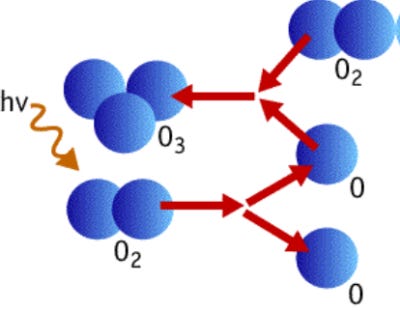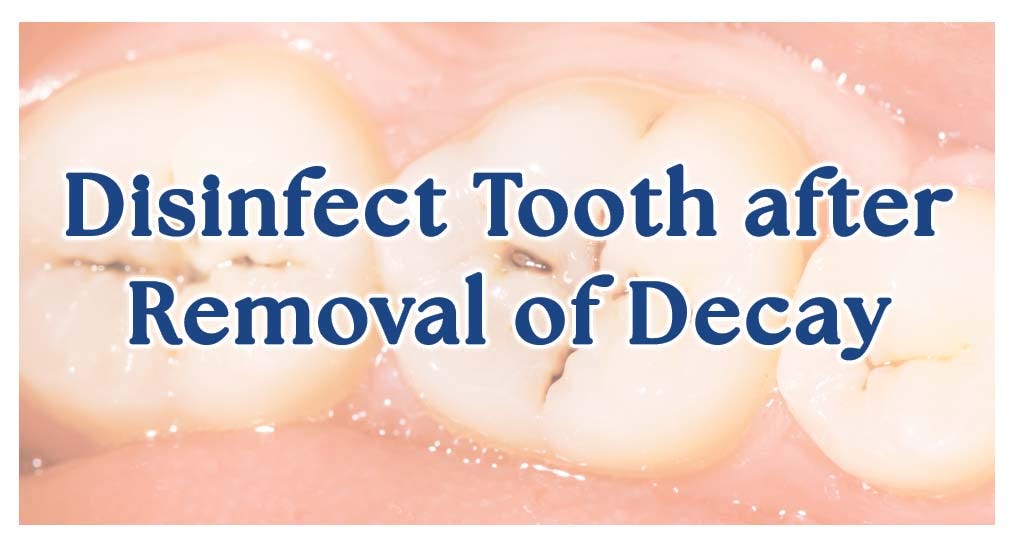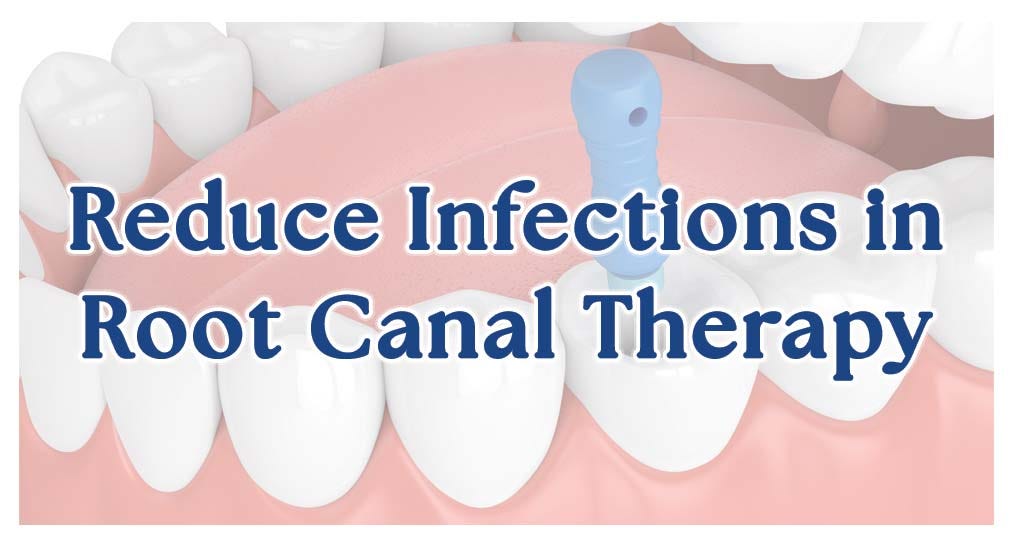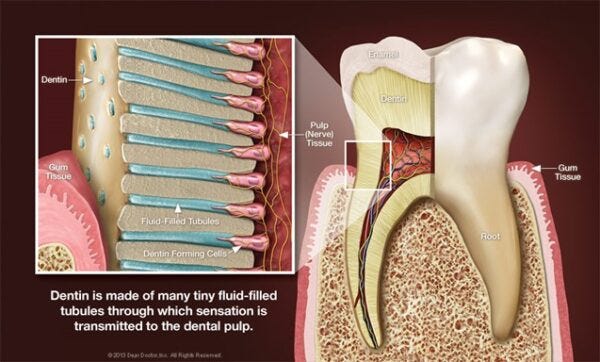Discover the Healing Power of Ozone
Biological Dentistry's use of Ozone is a safe and effective therapeutic tool
In recent years, ozone therapy in the dental office setting has emerged as a very exciting addition for dental professionals to use in disinfection and healing of teeth, gums, and bones.
Ozone is three atoms of oxygen bound together as O3 (three oxygen atoms). In nature, it is created when oxygen interacts with UV radiation from the sun, lightning, or our body’s immune system. Medical ozone/oxygen (MOZO) used in dental procedures is artificially created by passing medical-grade oxygen through a high-energy electrical field of a medically tested device that creates reproducible levels of ozone at specific doses.
The gas produced is a combination of oxygen and ozone, usually on the order of over 99% oxygen and less than 1% ozone. The resulting combined oxygen/ozone gas can be collected in a syringe for direct use, bubbled through water to make a powerful, non-toxic irrigant, or bubbled through various oils such as olive oil to greatly enhance the shelf-life activity of ozone and a dependable commercial product. The reliability of medical ozone devices to produce these pure, precise, small amounts have been verified by third-party and/or government laboratory testing.
HOW DOES OXYGEN/OZONE THERAPY WORK?
Oxygen/ozone, when introduced into a living system, creates what is called a “transient oxidative burst.” The infective microorganisms have no natural defense against this reaction, and, as a result, are overstressed and die. Thus, oxygen/ozone disinfects the area treated, both safely and effectively.
This “oxidative burst” also induces a multitude of natural biochemical and physiologic reactions. These reactions include better blood flow, enhanced immune response, and a more rapid healing response. Ozone is able to penetrate and oxidize bacterial biofilms better than almost anything, which makes it uniquely useful for treating the pathogenic biofilms of periodontal disease.
HOW CAN OXYGEN/OZONE HELP IN MY DENTAL CARE?
Staying within the accepted standard of care, with proper application, oxygen/ozone can enhance the outcome in all aspects of dentistry. For example, periodontal disease is characterized by a biofilm associated, chronic inflammation of the gum and bone accompanied with an overgrowth of pathogens leading to an infection. By utilizing the different application forms of oxygen/ozone such as ozonated water, ozonated oils, and placing oxygen/ozone gas directly into the infected gum pockets, periodontal disease can be mitigated without the use of pharmaceutical drugs and associated side effects.
Tooth decay or caries, which is really a “tooth infection,” can be arrested almost immediately upon proper exposure to oxygen/ozone therapy. This procedure is especially useful when treating children, as minimal to no drilling of the tooth is necessary. Depending on the amount of tooth damage from the decay there may be a need to remove the softened material and place a filling.
One of the most complex and perplexing problems in dentistry today is infection control. The oral cavity is a sea of microorganisms ideally living in balance with the entire human body. Under certain conditions pathogenic or “disease-causing” microorganisms can become the dominant life forms, thus creating what we call infection. These pathogenic microorganisms live together in what is called a biofilm.
This biofilm supports a mixed type of infection made up of bacteria, viruses, fungi, and even parasites. The difficulty is that each of these “disease-causing” types needs a different drug to eliminate its dominance. What if we had an agent that could treat and eliminate the infection and, in addition, support the surrounding healthy tissue without toxic side effects? We do now with oxygen/ozone therapy for dentistry.
An adjuvant treatment method for jawbone cavitations is ozone therapy. Oxygen/ozone gas is injected in a dose-controlled manner into identified lesions and can be a profound disinfectant. Many of the anaerobic waste products of microbial metabolism are themselves pro-thrombotic and tend to perpetuate the bone ischemia problem common in cavitations. Ozone can also provoke a number of healing mechanisms that result in the generation of new circulation.
Another area of concern in dentistry is the field of Endodontics which is interested in infected root canals in teeth. As part of root canal treatment, the inflamed, infected, or necrotic pulp must be removed with special instruments followed by rigorous irrigation of the space once inhabited by the pulp. Compared to traditional irrigants such as bleach, oxygen/ozone therapy has a greater potential of more thoroughly disinfecting the inside of the tooth, even into the smallest canals and tubules and thus provides a high level of disinfection which is an essential goal for this controversial treatment (see photo).
If used and applied properly, ozonated water, oxygen/ozone gas, and oils have proven to be very safe. As with all medical procedures, only your healthcare provider can determine if this procedure is right for you.
Click the following link if you’d like to find an IAOMT integrative biological dentist who uses ozone near you!
This IAOMT presentation on ozone by Griffin Cole, DDS, NMD, MIAOMT is considered essential for both dentists & other dental staff members who want to understand more about the benefits of ozone use in biological dentistry.
Further reading.
If you are interested in more information about ozone’s use in dentistry, these selected articles will provide a firm foundation of introductory knowledge:
Ali M., Mollica P., Harris R. Of Metalicized Mouths, Mycotoxicosis, and Oxygen. Townsend Letter, 2006 6 73-76
https://www.townsendletter.com/
AlMogbel AA, Albarrak MI, AlNumair SF. Ozone Therapy in the Management and Prevention of Caries. Cureus. 2023 Apr 12;15(4):e37510. doi: 10.7759/cureus.37510 https://assets.cureus.com/uploads/review_article/pdf/141403/20230512-8203-fhzeib.pdf
Baysan A. Lynch E. Effects of ozone on the oral microbiota and clinical severity of primary root caries. Am I Dent. 2004 17: 56-6o https://pubmed.ncbi.nlm.nih.gov/15241911/
Bocci V. Oxygen/Ozone therapy. A critical evaluation. Dordrecht, The Netherlands: Kluwer Academic Publishers 2002: 1-440
https://scirp.org/reference/referencespapers.aspx?referenceid=1619940
Bocci V. Ozone A new medical drug. Springer, Dordrecht, The Netherlands 2004: 1-295 https://www.academia.edu/13091557/OZONE_A_New_Medical_Drug_OZONE_A_New_Medical_Drug
Ferreira Jr LH Jr, Mendonsa Jr KD Jr, Chaves de Souza J, Soares Dos Reis DC, do Carmo Faleiros Veloso Guedes C, de Souza Castro Filice L, Bruzadelli Macedo S. Bisphosphonate-associated osteonecrosis of the jaw. Soares Rocha F. Minerva Dent Oral Sci. 2021 Feb;70(1):49-57. doi: 10.23736/S0026-4970.20.04306-X. Epub 2020 Sep 22 .PMID: 32960522 https://pubmed.ncbi.nlm.nih.gov/32960522/
Iliadis D, Millar BJ. Ozone and its use in periodontal treatment. Open Journal of Stomatology. 2013; 3(2): ID:32069 https://www.scirp.org/html/12-1460225_32069.htm
Kumar A, Bhagawati S, Tyagi P, Kumar P. Current interpretations and scientific rationale of the ozone usage in dentistry: A systematic review of literature. Eur J Gen Dent 2014;3:175-80 https://www.thieme-connect.com/products/ejournals/pdf/10.4103/2278-9626.141658.pdf
Masato N., Kitamura C. et al. Antimicrobial Effect of Ozonated Water on Bacteria Invading Dentinal Tubules. I Endod. 2004,30(11 )778-781 https://pubmed.ncbi.nlm.nih.gov/15505509/
Mohammadi Z, Shalavi S, Soltani MK, Asgary S. A review of the properties and applications of ozone in endodontics: an update. Iranian Endodontic Journal. 2013;8(2):40 https://www.ncbi.nlm.nih.gov/pmc/articles/PMC3662033/
Nagayoshi M, Kitamura C, Fukuizumi T, Nishihara T, Terashita M. Antimicrobial effect of ozonated water on bacteria invading dentinal tubules. Journal of Endodontics. 2004 Nov 1;30(11):778-81 https://pubmed.ncbi.nlm.nih.gov/15505509/
Nagayoshi M., Fukuizumi T., et al. Efficacy of ozone on survival and permeability of oral microorganism. Oral Microbiology an Immunology, 2004 19 240-246 https://pubmed.ncbi.nlm.nih.gov/15209994/
Nardi GM, Cesarano F, Papa G, Chiavistelli L, Ardan R, Jedlinski M, Mazur M, Grassi R, Grassi FR. Evaluation of salivary matrix metalloproteinase (MMP-8) in periodontal patients undergoing non-surgical periodontal therapy and mouthwash based on ozonated olive oil: a randomized clinical trial. International Journal of Environmental Research and Public Health. 2020 Jan;17(18):6619 https://www.mdpi.com/1660-4601/17/18/6619
Pattanaik B, Jetwa D, Pattanaik S, Manglekar S, Naitam DN, Dani A. Ozone therapy in dentistry: a literature review. Journal of Interdisciplinary Dentistry. 2011 Jul 1;1(2):87 https://jidonline.com/article.asp?issn=2229-5194;year=2011;volume=1;issue=2;spage=87;epage=92;aulast=Pattanaik
Saini R. Ozone therapy in dentistry: A strategic review. Journal of Natural Science, Biology, and Medicine. 2011 Jul;2(2):151 https://www.ncbi.nlm.nih.gov/pmc/articles/PMC3276005/
Suh Y, Patel S, Kaitlyn R, Gandhi J, Joshi G, Smith NL, Khan SA. Clinical utility of ozone therapy in dental and oral medicine. Med Gas Res. 2019 Jul Sep;9(3):163-167. doi:10.4103/2045-9912.266997. PMID: 31552882 https://pubmed.ncbi.nlm.nih.gov/31552882/
Thorp KE, Thorp JA. Ozone Preconditioning: Waking up the dragon. G Med Sci. 2021; 2(3): 010-039 https://www.thegms.co/internalmedicine/intmed-rw-21051402.pdf
Tiwari S, Avinash A, Katiyar S, Iyer AA, Jain S. Dental applications of ozone therapy: A review of literature. The Saudi Journal for Dental Research. 2017 Jan 1;8(1-2):105-11 https://www.sciencedirect.com/science/article/pii/S2352003516300260
Tonon, C, Panariello, B, Spolidorlo, D, Gossweiler, A, Duarte, S. Anti-biofilm effect of ozonized physiological saline solution on peri-implant-related biofilm J Periodontal. 2020;1 -12 DOI: 10.1002/JPER. 20-0333 https://pubmed.ncbi.nlm.nih.gov/33231303/
Tricarico G, Orlandin JR, Rocchetti V, Ambrosio CE, Travagli V. A critical evaluation of the use of ozone and its derivatives in dentistry. European Review for Medical and Pharmacological Sciences. 2020 Jan 1;24:9071-93 https://www.europeanreview.org/article/22854
Veneri F, Bardellini E, Amadori F, Conti G, Majorana Efficacy of ozonized water for the treatment of erosive oral lichen planus: a randomized controlled study. A.Med Oral Patol Oral Cir Bucal. 2020 Sep 1;25(5):e675-e682. doi : 10.4317 /medoral.23693.PMID: 32683383 https://www.ncbi.nlm.nih.gov/pmc/articles/PMC7473429/















Excellent article! Speaking for my husband David (Founding member IAOMT and successful ozone user more than 30 years), ozone is much more effective than products containing toxins and aspartame!